It’s been a year and a half since we got our first glimpses of the now named Saris MP1 platform. Back then, Saris was called CycleOps, and the platform didn’t even have a name. It was just dubbed “The Thing” (for real). But here we are in early 2020 and ‘The Thing’ is now shipping and finds itself in people’s training caves around the world.
The MP1 (an acronym for Motion Platform 1) is designed as a new take on rocker plates. The concept of adding motion to indoor training is hardly new. Kinetic has been doing it for years with their Rock and Roll series of trainer products (and more recently their R1 trainer). Atop that there’s a vibrant community of enthusiasts and smaller companies that have made home-built platforms and beyond to varying degrees of success.
Still, there’s little question that the MP1 is different than the rest – perhaps namely, its forward and back movement. Or, maybe its $1,199 price tag. Or that it came from one of the major trainer companies.
No matter the case, I’m here to figure out how well it works and whether or not it’s worth it. If you want to dive right into the video, simply press play below. It’s useful in this review due to how much of the product is about movement.

Finally, note that Saris did send over a media loaner for me to poke at. Once I wrap up this review I’ll let them figure out the fun logistics of getting it back to them. If you found this review useful, hit up the links at the end of the post. With that, onwards!
Unboxing:
Before we can unbox this beast, we need to start with getting this beast to the right place – since it was accidentally delivered to my home, and not the DCR Cave. So for that, I loaded up the platform into the cargo bike on a nice windy morning in Amsterdam, strapped The Peanut #2 to the back, and set out for a ride across town.
Oh, and because (just because), I decided to add another sail to the bike, this in the form of a table that also went to the wrong place. See, now we’re set:
The only caveat with this setup is that I didn’t fully think through the rotation radius of the handlebars, so…umm…I couldn’t exactly turn left very quickly. I was like a large cruise ship trying to make right turns. Thankfully, I only have three right turns to make on my route.
Still, got it down to the DCR Cave in one piece, and P2 had a fun time too.
With that, it was time to get it unboxed. Technically the unit came in a shell box (that you see above), and then inside of that was the prettier Saris MP1 box that you see below:
You’ll place it on the floor and then open it up to unbox it. If you place it in what you think will be the most logical manner, you’ll find that it’s actually upside-down. Thus, apparently the correct side of the box is the other side.
Next, remove some of the stuffs around the platform. The platform itself comes fully assembled. The only things you’ll add are the straps and wheel braces. So your job here is just getting the platform freed of the box.
While it’s somewhat heavy, it’s not as bad as you’d think actually. The platform weighs 62lbs/28kg by itself (which, actually isn’t that much more than most 20-23KG trainers).
Next, remove some of the accessory bits. This is ultimately what you’re left with:
You’ve got two paper things, a cleaning cloth, two straps, two riser blocks, and one wheel block. Easy peasy!
See, that was simple, wasn’t it?
Assembly & Compatibility:
The first thing to know is that yes, it’s likely compatible with your non-Saris/CycleOps trainer. In fact, Saris has an entire website dedicated to letting you not only look-up compatibility, but also the optimal placement for that trainer on the MP1.
With that FAQ question out of the way, let’s talk about the basics (don’t worry, we’ll get back to compatibility later).
The back half of the platform has four main channels in it, plus two front wheel channels and two rear channels near the back of the platform. These channels are where you’ll attach two straps to keep your trainer on the platform. Depending on the exact trainer, you’ll use some combination of the inner and outer channels.
For example, take the Saris H3 trainer. For this unit you’ll use the inner ride-side channel, with the outer left-side channel:
The reason being that the general goal of the platform is to keep your bike on the centerline. Whereas different trainers distribute the weight in different places, albeit, usually to the left of the bike.
The straps attach by a funky little mechanism that slides into the rail at one end, and then has these little notches the entire length of the rail:
Once you find the right spot, you’ll tighten the bolt part, and then use the Velcro on the trainer:
In any event, the front wheel is somewhat similar in implementation. They’ve included a wheel-block that keeps your front wheel from wobbling about. Technically speaking this isn’t 100% required, but it can feel a bit weird during sprints without it (I tried, for fun). I’d recommend using it.
Just be sure when doing the straps that the metal bits are positioned on the side of your wheels, and not right at the center/peak of your wheels (which would be bad rubbage).
With that, you’re done and ready to roll…err…rock..err…rock and roll. Oh wait – one more thing. There’s two riser plates. These are for the front wheel, and allow you to increase the stack height of the wheel. Some people do this because they’ve got a smaller wheel on a taller trainer so this positions the bike level, and other people do it to simulate climbing.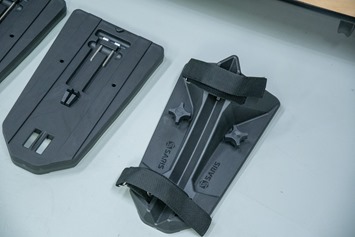
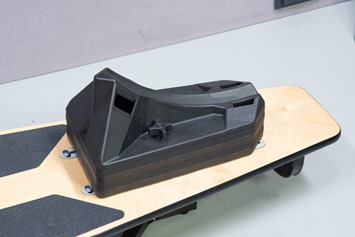
I didn’t need/want either, but you do you.
Now – let’s say you’re adventurous, and want to do another trainer. No problem, you can do so. As noted, the Saris site has guidelines for plenty of popular trainers.
So, for fun, here’s what a Wahoo KICKR looks like:
Then a Tacx NEO 2T:
Then the Elite Suito:
And finally, the Kinetic R1 trainer:
There wasn’t actually a guide for the Kinetic R1. I just freestyled it. Which, is roughly what it’s like when you combine a rocking trainer with a rock and roll plate. I’d strongly recommend against it, fwiw. I tried riding it. It was oddly actually ok feeling while sprinting (not great, but passable), but was totally wonky just riding steadily. Obviously, having two platforms double-move is bad-bad. But I had to try it for science.
Oh, wait, one more bit of sketch: The Wahoo KICKR + a Wahoo CLIMB:
Yes, this wasn’t ideal. I had to roll my own strap combo by re-using the front block system and sticking the two ends together. The challenge here is that the KICKR CLIMB actually pivots on the base. So the straps have to have enough give to allow that pivot, which means it’s just loosey-goosey in certain positions. Plus, the alignment means the CLIMB sits a bit funky on the front metal channels.
Somewhat interestingly, the first Saris/CycleOps prototype platform actually did work better with the KICKR CLIMB, because there was no narrow front end. When they narrowed it out (for logical reasons, namely to make it more usable indoors), it reduced the room for the CLIMB. Anyway, no biggie. Technically speaking I suspect someone could come up with a better mount for it, then you’d be mostly ok again.
In any event, what about an indoor bike you say? No problem. Here’s the Wahoo KICKR Bike:
But, I should probably mention that on Saris’s site, they don’t recommend this. Obviously, I made it my goal to ignore this advice. All of it.
I actually did an entire workout that way. It’s a…umm…unique experience. The motion largely felt fine, but this feels super high up, especially when the KICKR CLIMB portion goes up.
Oh, and in case you’re curious – the max weight of the platform is 350lbs/159kg, which was technically enough for me and the KICKR Bike to bobble along safely within spec.
Meanwhile, the Tacx NEO Bike didn’t really fit, with the front end teetering over the edge:
Nor did the Wattbike Atom:
Ok, enough fun for now. Let’s get onto normal use.
How it works and usage:
Before we talk the horizontal shuffle, we’re going to talk something even more exciting: Grip tape.
Yup, the platform has anti-slip grippy stuff placed in just about every area that you’d either place your feet to step, or place a trainer. All of which is in the name of minimizing a slip.
And it works great in that sense. Though, I’m guessing that if you spilled a bunch of nutrition gel (or a piece of pizza upside-down), it’d probably be hell to clean versus a more wipeable surface. You’ll have to do that test on your own – my supply of cleaning and sanitizing tools is reserved for more important tasks these days.
However, to spoil a bit of this review, about the only thing I’m not a fan of on this platform is the wood look. It’s just a personal preference thing, but it’s not my cup of tea for my training cave. For others, it might fit in great. Also, while the birch wood (it’s real wood) is treated to resist sweat, I can’t help but wonder how long it’ll hold up after years of abuse. It could be just perfectly fine, but I can’t test/review that one way or the other
With the boring stuff out of the way, the platform moves in two core directions: Front/back movement, and side to side tiling.
In the case of front/back movement, the platform is essentially rolling on a shallowly curved metal track. The harder you move the further you go. Here’s a nifty little animated GIF showing that movement as I rock it back and forth:
But by having the curved nature of it, it takes more effort to move it further, since your body + trainer + platform weight wants to drive the rollers back to the center point.
In many ways, this front/back movement is really the secret ingredient over most rocker plates that just tilt left/right. It means that every pedal stroke generates 3D movement – front/back as well as tilting side to side.
Note though that it does not tilt front/back however (as seen in the animated GIF above). In total, the track allows you to move 24cm/9.5” forward, or 24cm/9.5” backwards from the center point.
Next is the tilting motion, which is side to side. What’s happening below is that the entire platform is actually tilting on a single piece of metal. Here are the three main positions – all the way down right, centered, and all the way down left:
You can also see the little rollers on the underside of the platform as well here in the back, thus, there are actually four different rolling points on the trainer (one front, two sides, one center).
In the side to side tilting motion vector the platform tilts up to 6° at the base of the platform, which is most easily seen when I stand on one edge:
Out of curiosity, I then placed the level up higher – on my saddle. Would that result in any greater tilt angle (given the higher altitude)? Not really, it recorded 7° there:
To my satisfaction, this tilt didn’t result in any lack of stability in getting on the bike, or tipsiness while using it. In fact, I tried to tip it – and can’t. Which isn’t to say that a person with more creativeness (or balls) won’t figure out a way. But I leaned as far as I could towards the wall while on the bike and couldn’t get it to tip.
Also, I stood on one side and pulled the bike towards me, and couldn’t get it to tip over without jerking the entire platform with me.
Cow-tipping aside, what does the side to side feel like for riding? Well, it’s good…as long as you’re not sprinting. See, for each pedal stroke you make you’ll get a bit of that side to side movement. It’ll feel natural at this level, because it’s not overly dramatic. That movement is good.
However, where things get a bit messier on the MP1 (and every other rocker plate) is sprints. In this scenario, the movements indoors on the rocker plates (and MP1) are opposite what happens outdoors. See, outdoors when you’re right foot/leg goes down, your bike/body will naturally lean to the left. But on a rocker plate by default, the opposite happens, the bike leans right – it’s hard to see it in a still shot like below, but super easy to see in the video at the start of the post.
As anyone in the rocker plate community or industry will quickly remind you, you can fix this by ‘learning’ how to sprint indoors on a rocker plate, which roughly involves using your arms to counterbalance. And that’s OK– to an extent.
I think it’s completely fine that the experience of sprinting indoors is different on a rocker plate than the real world. Just like racing a crit in Zwift is different in various ways than racing a crit outside. There are things you must account for inside in Zwift that you don’t account for outside. And vice versa. So, if one wants to learn how to sprint properly indoors – that’s totally cool.
However, where I have an issue is when a company/individual represents a rocker plate product as being “just like outdoors”. Which, it isn’t. That newly learned skill to sprint/climb indoors won’t translate outdoors – because your body already knows how to ride a bike outdoors (hopefully). Thankfully, Saris hasn’t actually made any claims like that here. They’ve been open about the fact that there are differences between those two.
And again – don’t misunderstand me: Go forth (if you want) and learn how to sprint on a rocker plate. I have zero issues with that. Just don’t tell other people that they “need” to learn how to do that. Got it? Good.
So about now you might be asking – why bother with movement at all? Aside from a cool-factor, what does it actually do? Well, in short, it keeps your butt happy and forces your core to work more. Those micro-movements the platform provides means that your contact points (primarily your butt onto the saddle) are constantly adjusting, just like they would outside on the real road. As a result, the impact to longer trainer rides is more significant.
For ‘fun’, earlier this week I did a 2hr 10min trainer ride. Just because.
And upon stepping off that trainer ride, my butt was basically just like ‘shrug, no big deal’. Not because I do long trainer rides often (nope, this is by far the longest I’ve been on a trainer in a single session in years) – but I’m guessing because of some of that movement.
Did I back that up with a bunch of secondary non-platform 2hr and 10min rides? Nope – I’ve got better things to do than sit on a trainer again for 2 hours. But again, you do you.
Saris has shown studies they did with Trek on this concept (specifically the contact point hot spots and differences) at past media events where they talked about the MP1. I’m going to try and get them to publish some of those studies, as I think it’s interesting. [Update: Some of it posted here.]
Until then – I’ll just use my anecdotal evidence that I’d much rather have some slight movement for any long trainer rides than not. Which admittedly is hardly a very new or profound claim – that’s been the case for most trainers for years.
Wrap-Up:
I don’t think there’s any question in my mind (or really anyone else’s) that the MP1 is a good product. It is. The subtle movement while just riding along is super nice, especially for longer workouts. But even on shorter workouts, that slight bit of movement is much appreciated. I’m going to be sad going back to more stationary situations. More specifically though, I really think the front/back movement is the secret sauce here. Having ridden a handful of other random rocker plates at trade shows/events/etc, they all accomplish some element of side to side movement.
But it’s that normally shallow front/back movement that somewhat completes the 3D aspect of this in your brain. And it’s not moving a lot. While just rolling through intervals in ERG mode, it’s only slightly rocking back and forth (forward/back) a handful of millimeters each direction. But your body notices that. Or at least, my brain does. Of course, the MP1 doesn’t realistically simulate outdoor sprints, but neither does any other rocker plate/platform either.
The primary challenge with the MP1 largely isn’t technical or product based. It’s price. It’s just too darn expensive. At $1,199 the conversation is no longer about the product, it’s about people making jokes about the price. While the same was somewhat true of the Wahoo KICKR CLIMB when it first came out (at half the price – $599), the difference with that trainer accessory is that a large percentage of people (at announcement of price) still said they wanted it. Partially because they liked riding plastic horses in grocery stores, and partially because $599 was still less than the cost of their trainer. With the MP1, it actually costs more than the Saris H3 smart trainer you might place atop it. Or for that matter is more than the vast majority of trainers on the market (only the Tacx NEO series is more expensive, and the Wahoo KICKR is price-matched at $1,199).
So my hope is that Saris finds a way to get that price closer to the popular KICKR CLIMB ($599 or below). If they can do that, then I think they’ve got a runaway success. Otherwise, I suspect it’s going to be a hard accessory for a lot of people to get approval from their household accounting division – no matter how good it might actually be.
With that – thanks for reading (and good luck with your accounting department appointment)!
Found this review useful? Support the Site:
Found This Post Useful? Support The Site!
Hopefully you found this review/post useful. At the end of the day, I’m an athlete just like you looking for the most detail possible on a new purchase – so my review is written from the standpoint of how I used the device. The reviews generally take a lot of hours to put together, so it’s a fair bit of work (and labor of love). As you probably noticed by looking below, I also take time to answer all the questions posted in the comments – and there’s quite a bit of detail in there as well.
If you're shopping for the Saris MP1 NFinity Motion Platform or any other accessory items, please consider using the affiliate links below! As an Amazon Associate I earn from qualifying purchases. It doesn’t cost you anything extra, but your purchases help support this website a lot.
Here's a few other variants or sibling products that are worth considering:
And finally, here’s a handy list of trainer accessories that most folks getting a smart trainer for the first time might not have already:
And of course – you can always sign-up to be a DCR Supporter! That gets you an ad-free DCR, access to the DCR Shed Talkin' video series packed with behind the scenes tidbits...and it also makes you awesome. And being awesome is what it’s all about!
Thanks for reading! And as always, feel free to post comments or questions in the comments section below, I’ll be happy to try and answer them as quickly as possible. And lastly, if you felt this review was useful – I always appreciate feedback in the comments below. Thanks!





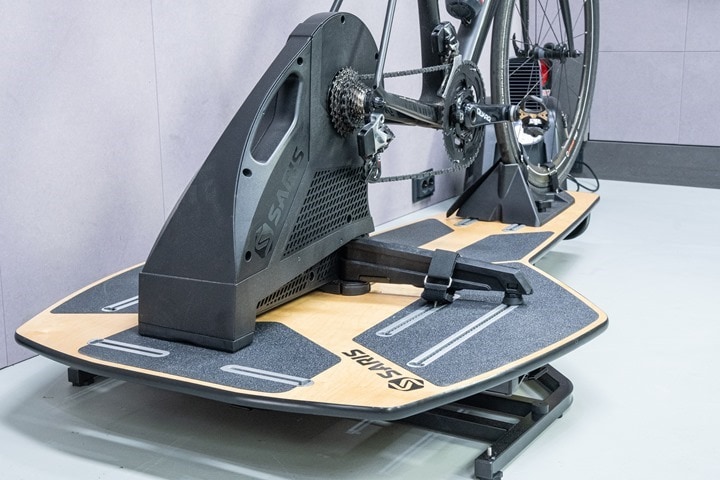
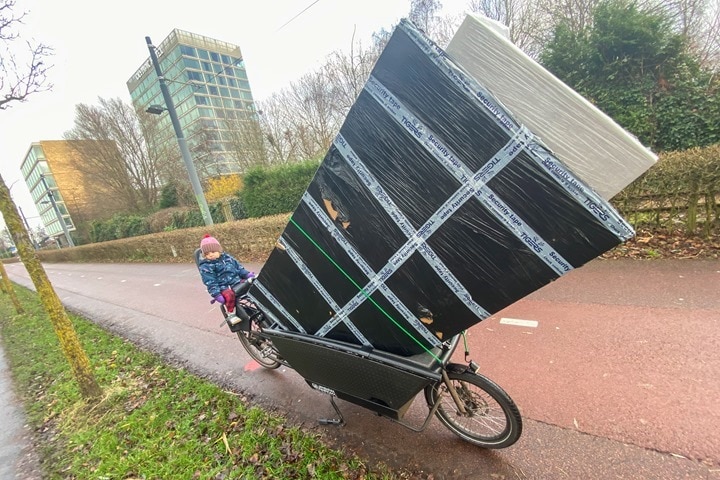
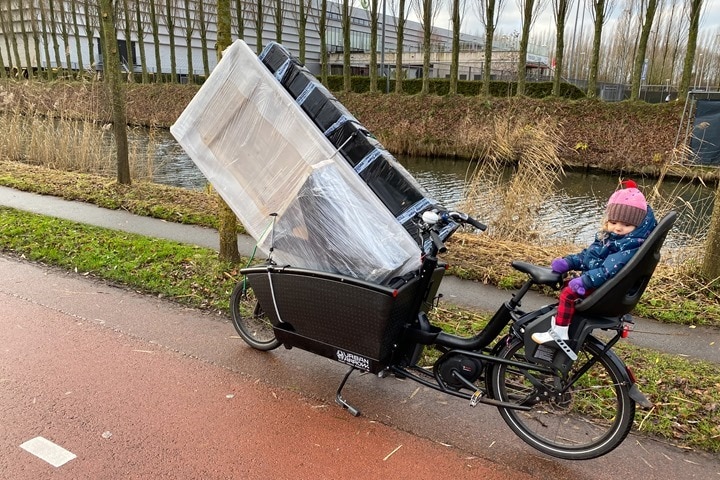
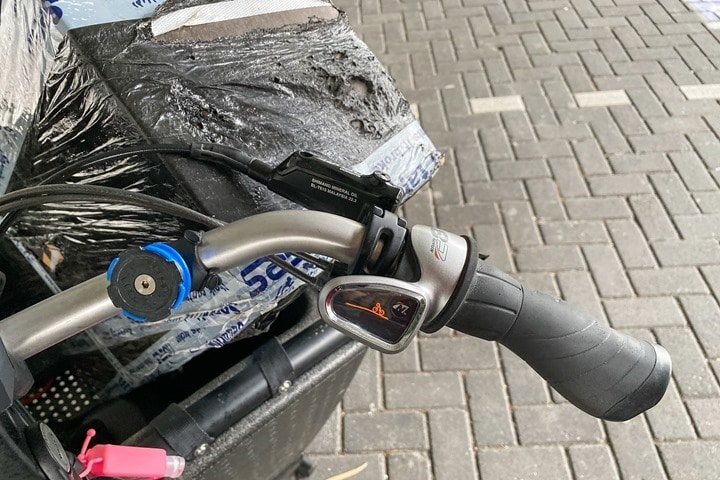
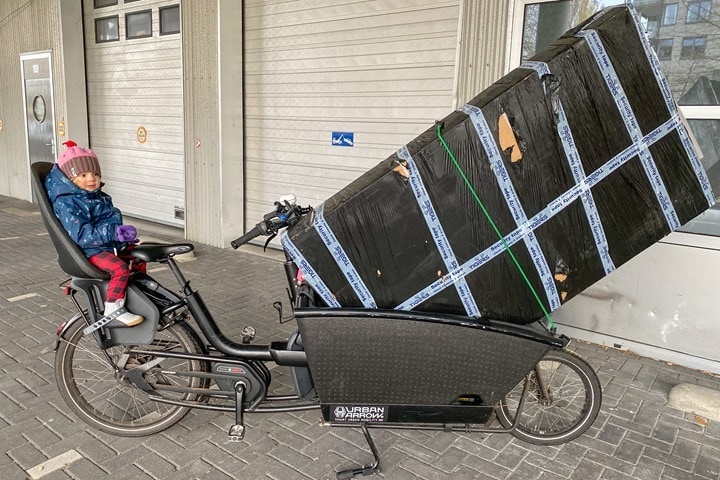
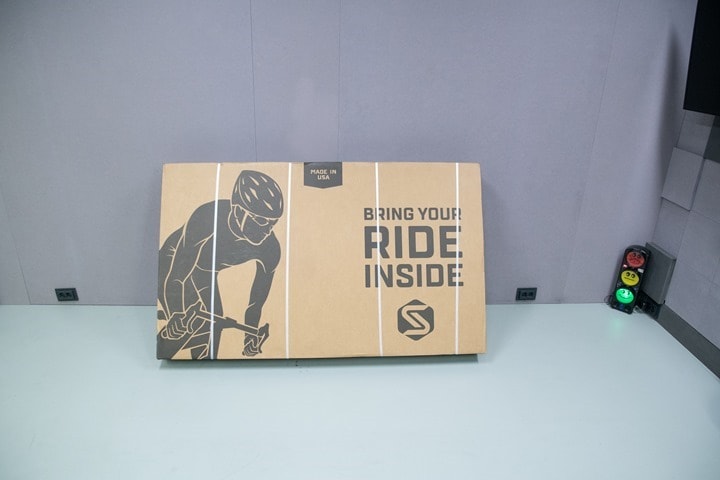

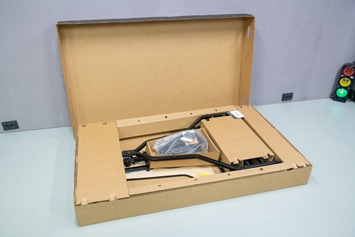
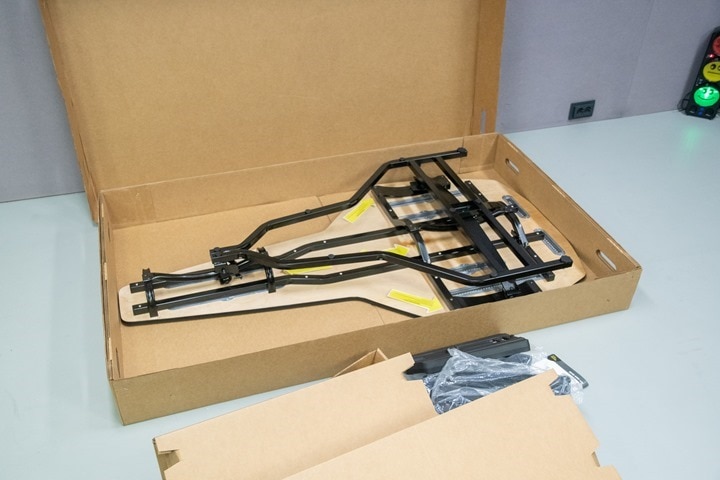
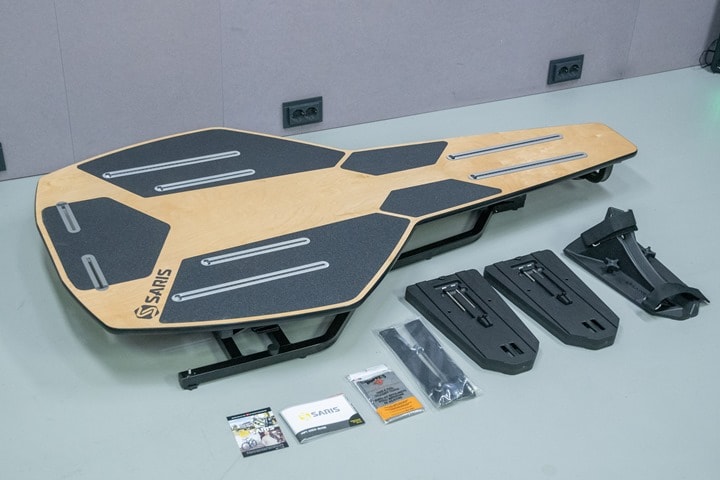

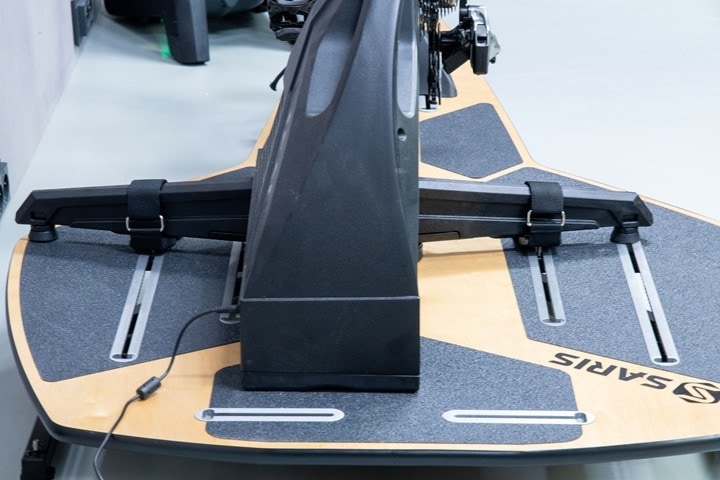
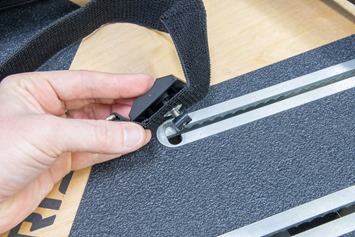
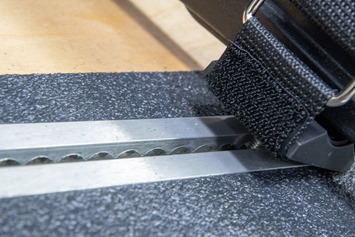
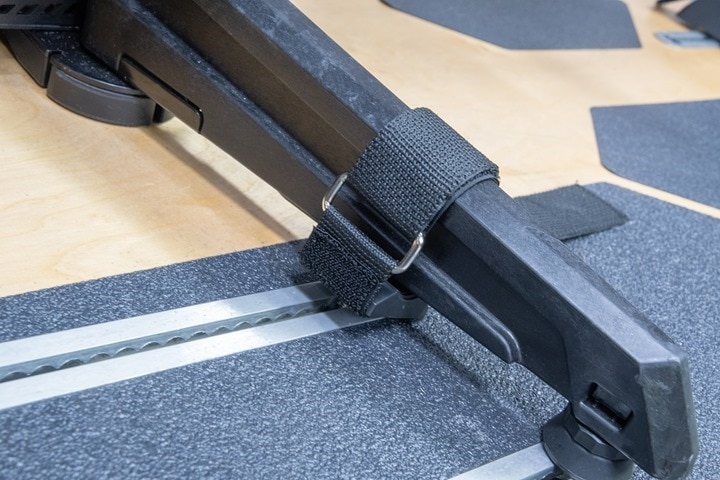
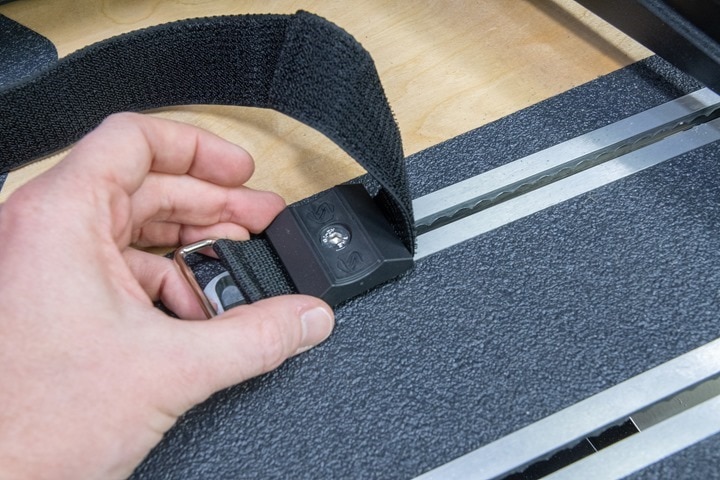
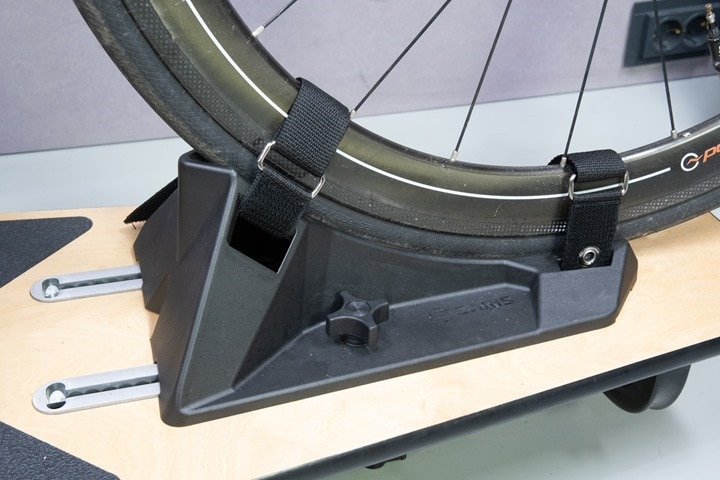
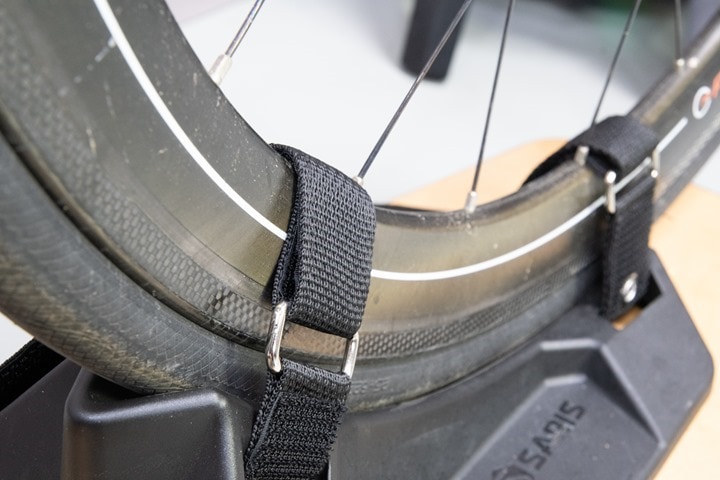

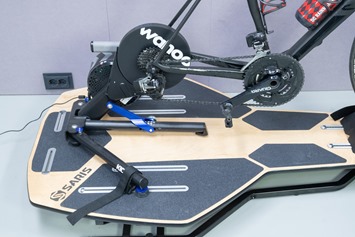
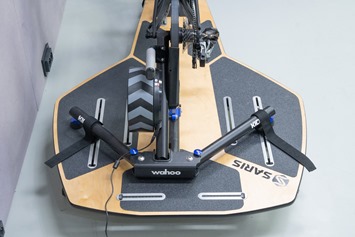
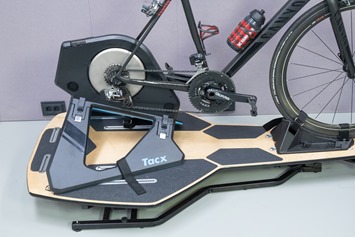

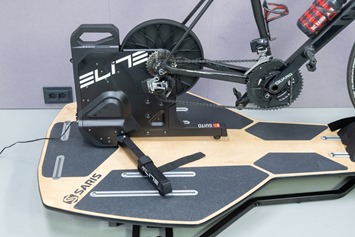
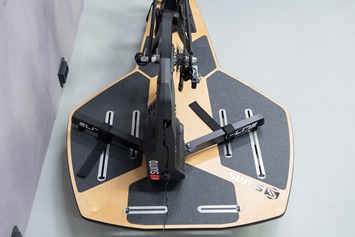
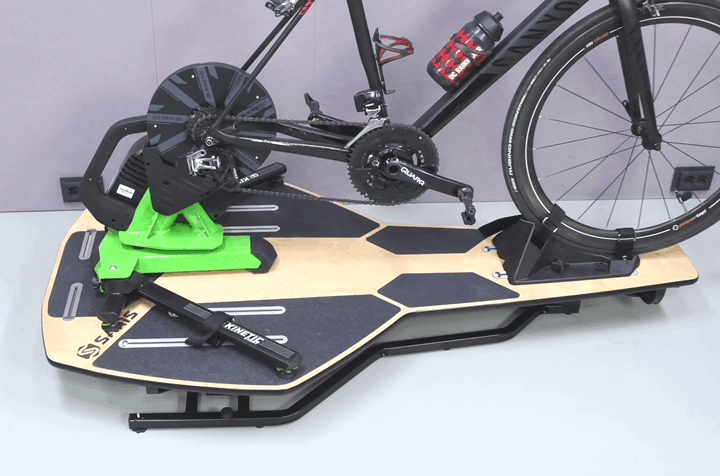
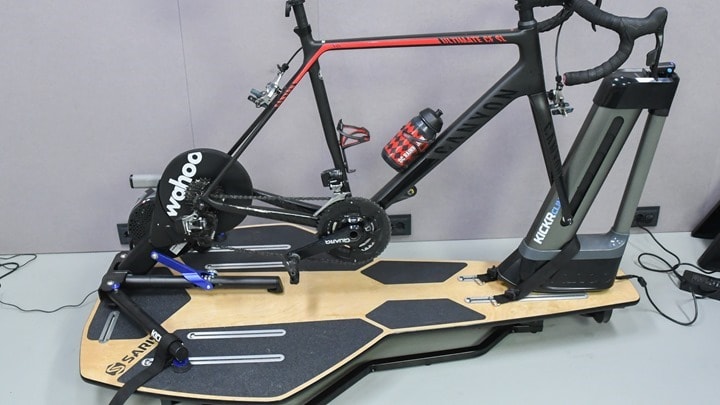
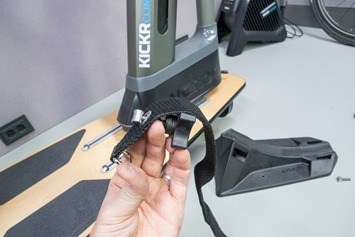
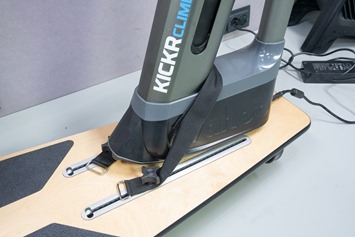
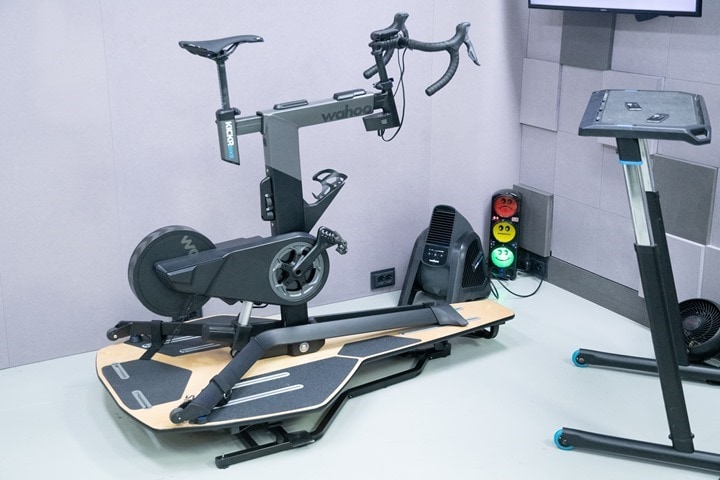

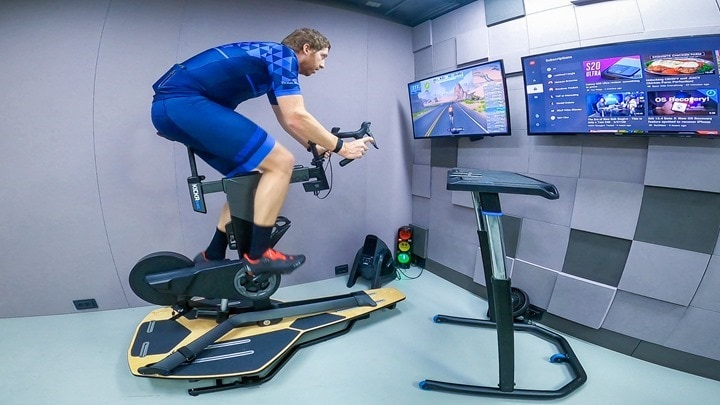
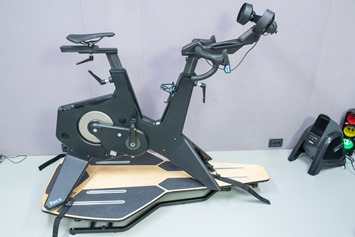
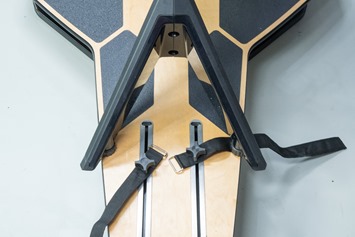
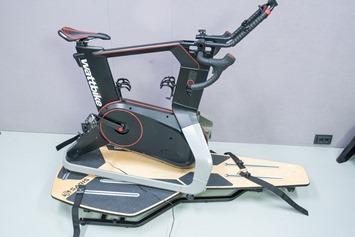
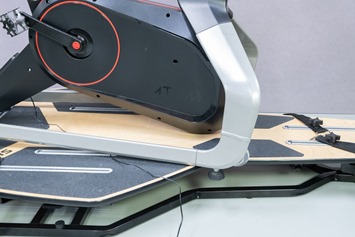
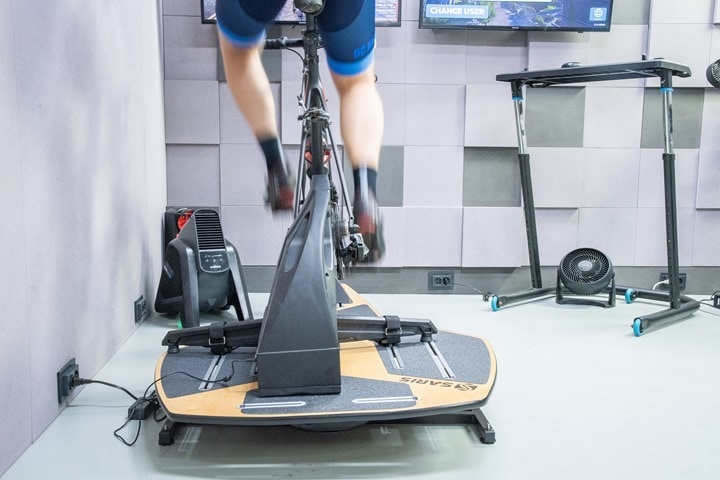
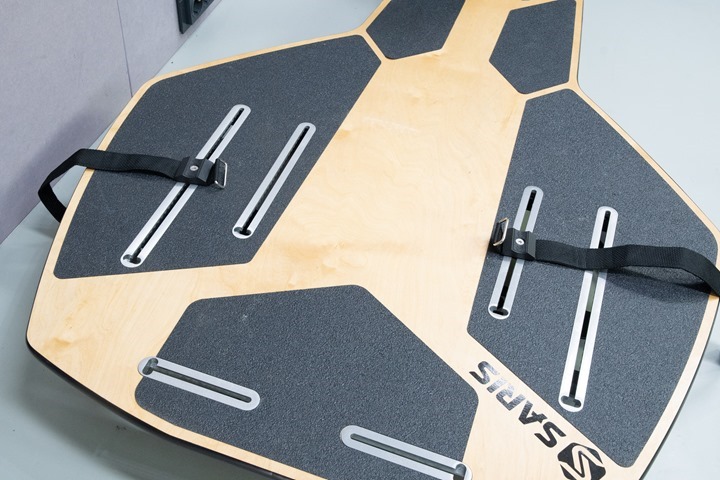
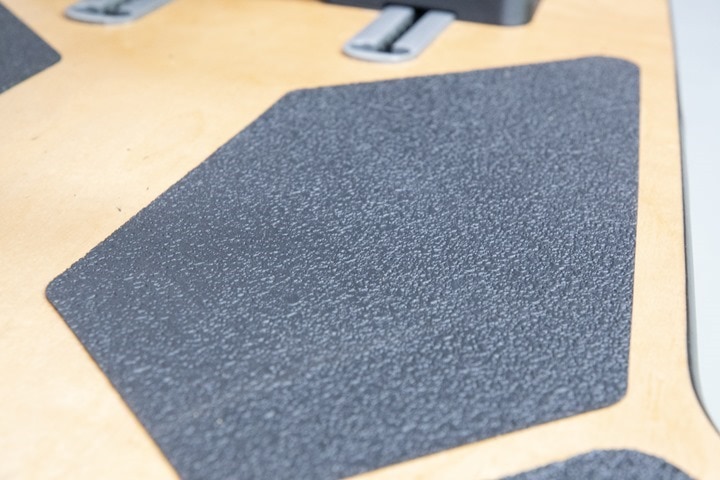
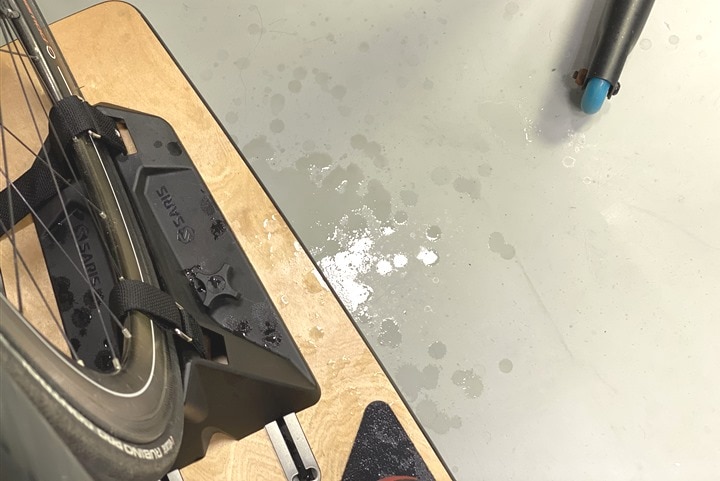
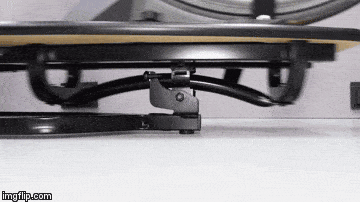
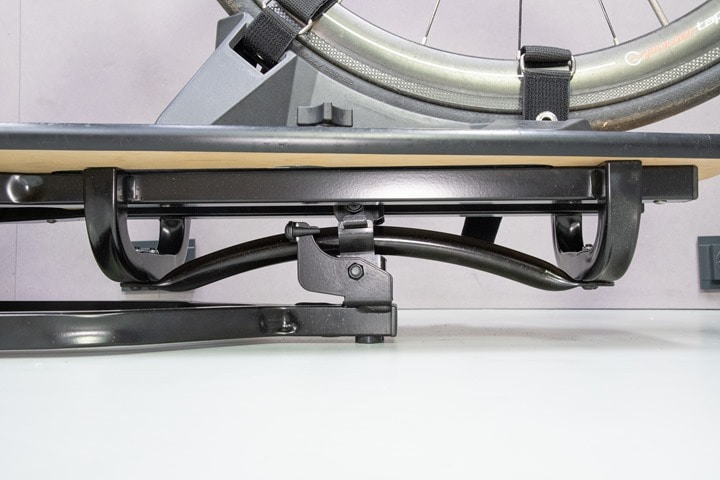
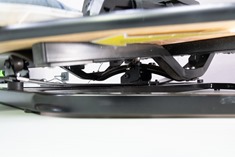
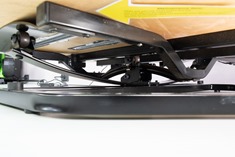
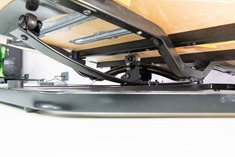
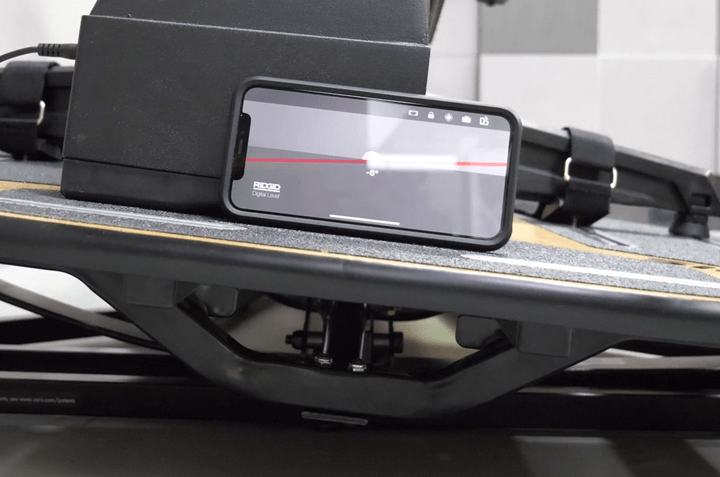
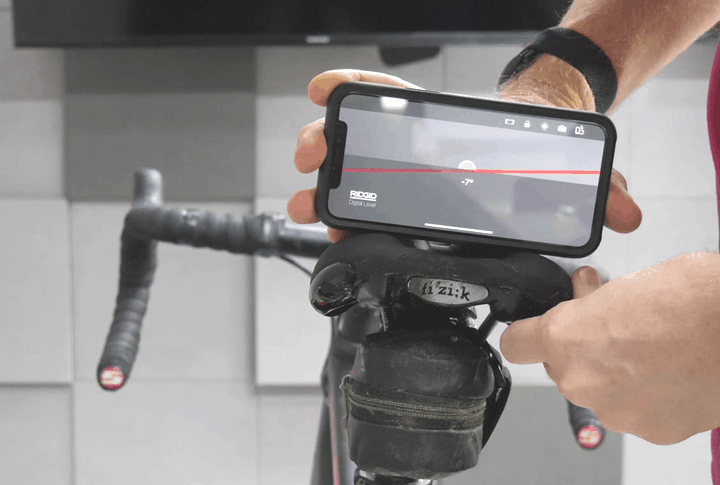
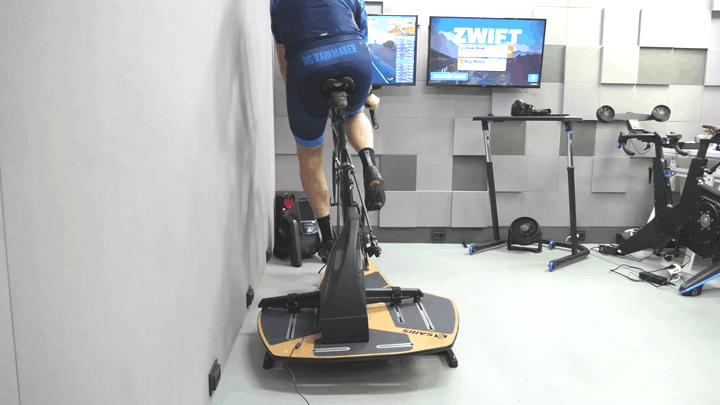

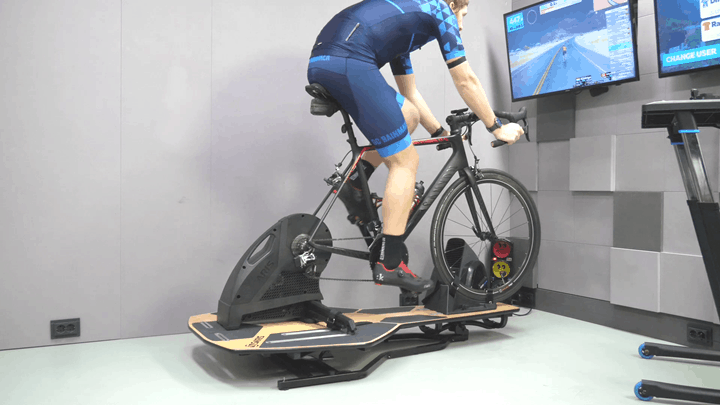
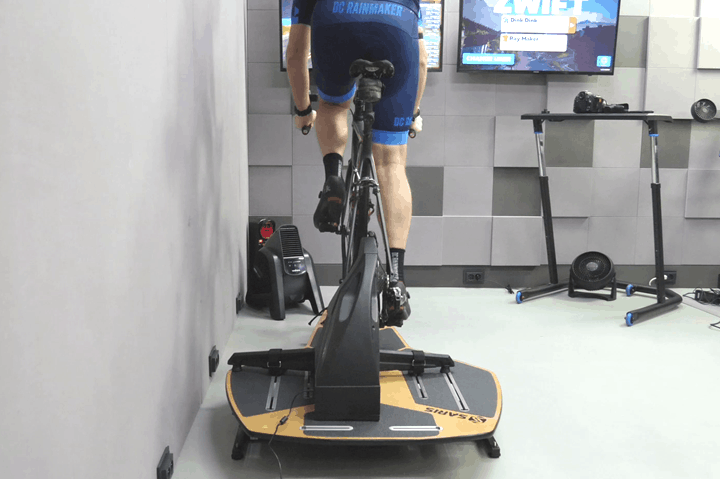
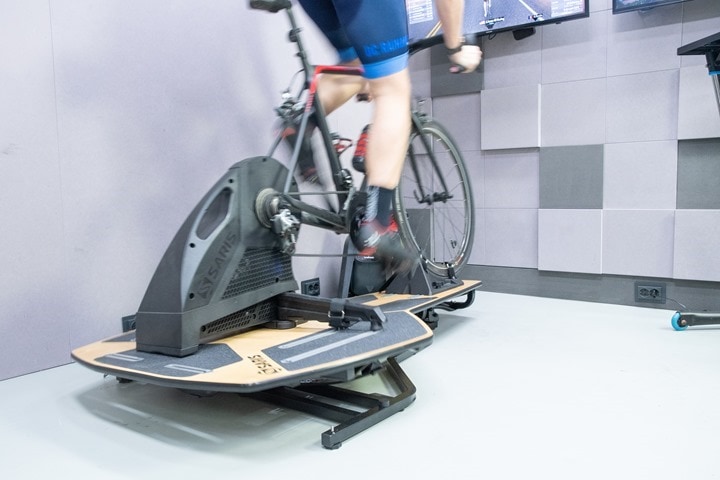
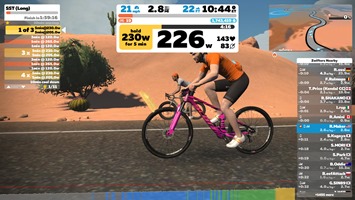
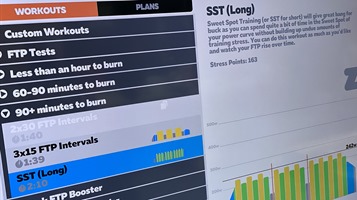
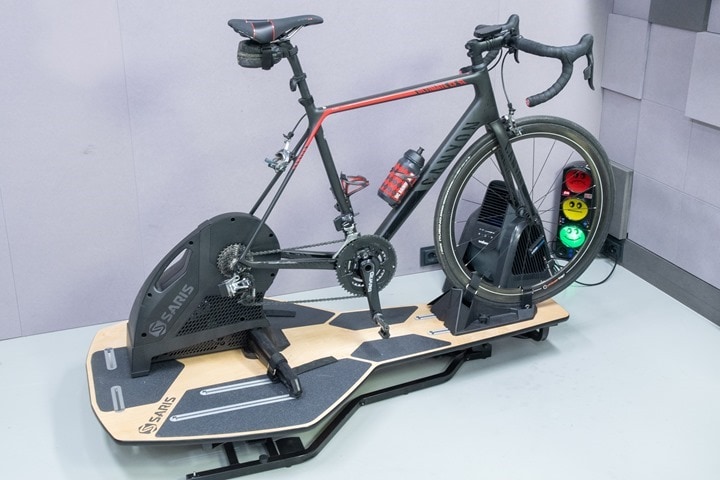
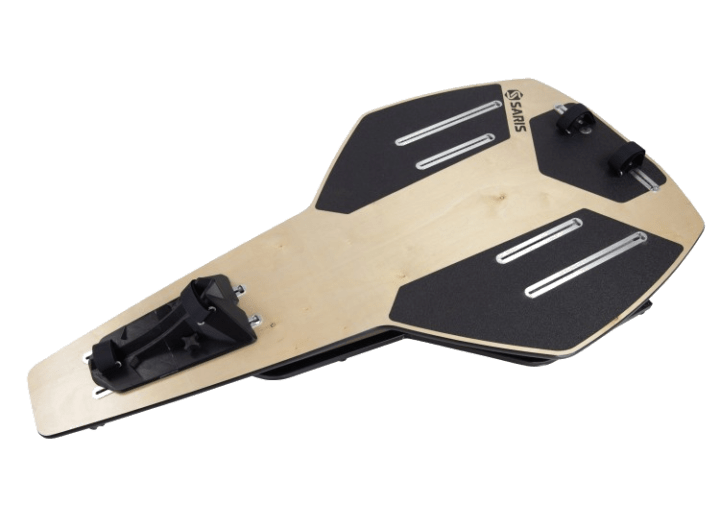
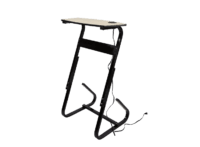
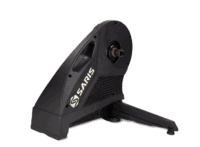
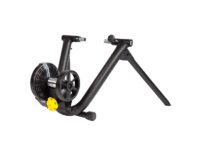
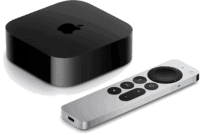
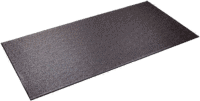

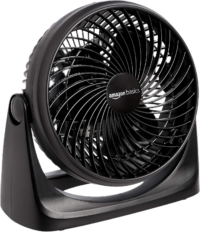

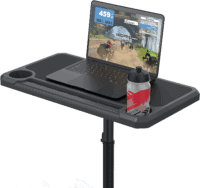
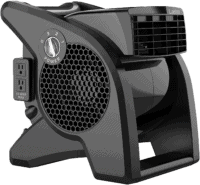
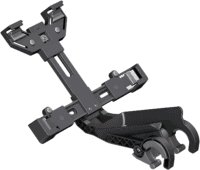





















Thanks for the review, Ray. On the subject of “studies on this concept” we can share this: link to saris.com
We will share others as they are available.
That study is an interesting start, but falls short. The most significant thing missing is a data set for “outside riding” that may serve as the baseline or goal. Rigid is great, MP1 is great, but is anyone really surprised they are different? I know I’m not.
Without really knowing a goal, can we say that either the Rigid or MP1 are “better”? I know from experience that the motion is better from a comfort and overall use perspective. But in attempting to quantify the realities of motion on trainers (which I happily welcome), I think we need to have at least a comparison to real riding, if not setting parts of that as a goal.
I would also include testing that isolates left-right rocking, fore-aft surging to see what each offers on its own. Then I’d add rollers into the mix, since they are an option that has been used and includes a level of comfort like the motion trainer, since its not restrained like a rigid trainer.
I think the posted info is cool, but it’s just a start and should be added to so we can have an even better picture of the training options and how they relate to real riding outside.
Congrats on hitting 8k in the rocker FB group!
Much appreciated. It’s a nice milestone to see the growth and progression over the two+ years since we started the group. It’s come a long ways, and we’ve seen a greater expansion in rocker awareness and acceptance since I released my design in November 2017. There was some real skepticism and even pushback from some people back then.
I’m excited to see the release of every new model from small and large makers, and can’t wait to see how these progress over the next couple of years :D
Thanks Brian-
I’d love to see some of the bits/slides that were shown to the media groups back at the launch event this summer, as well as I think someone a in 2018. It’s all a bit fuzzy some 9-18 months down the road.
In any case, I’ve linked that link above where I previously referenced it.
Cheers.
On the “pedal timing is wrong” topic. I am fine with it. I used to complain about it and point it out for any vids shared in our rocker plate group. But in the end, people are more comfortable and that is the key element that I have realized matters to most rocker users. Realism ranked lower than comfort in all the polls I ran a couple of years ago.
And if we criticize rockers for their backwards movement, what about the entire lack of movement on typical rigid trainers? There is nothing natural or realistic about a bike that doesn’t move at all, in any direction. We have adapted to the odd standing that accompanies a rigid trainer, most without realizing they are doing it. But that movement is awkward to watch, and is not at all like we do outside. My point being that we’ve been doing the “wrong” movements on rigid trainers since they existed, and we’ve adapted to riding outside again just fine. Backwards rockers should be no worse in my eyes.
And finally, how much time do we spend out of the saddle when compared to seated? It’s likely less than 5% of our total time on a trainer. I do some specific workouts that include lots of standing drills, but even the longest ones are 30% or less of the entire workout. That is an extreme and I thing most people are far less than that percentage. So, even when the standing is “wrong” it’s such a small part of the time we spend on the trainer that it is likely a non-issue (see rigid standing above).
So, recognizing that rocker plates can be super beneficial from an overall experience, and more especially comfort standpoint, is the most important thing to consider, IMHO. Having it get us a bit closer to riding outside is nice when compared to rigid trainers, but I also don’t think an exact simulation is necessary or even what most people want. If that’s the case, motion rollers are much closer to real riding outside (despite their oddities as well). But we don’t see wide adoption of them since they are so difficult to ride in comparison. I think rocker plates serve as a happy medium that goes well beyond rigid trainers, but not so far as motion rollers. Maybe, just maybe we have something approaching the “just right” blend of motion, control and stability that is good for a majority of riders.
I totally agree that the main benefit here is largely seated efforts. And I think at lower price points (where most of the smaller players are), it makes total sense.
RE: “And if we criticize rockers for their backwards movement, what about the entire lack of movement on typical rigid trainers?”
However, one has to remember that while a static trainer with no movement is likely less ideal than a movement solution – it’s also a zero-additive price point. Meaning, with adding a $500 plate – you’re paying $500 more for a solution than not having a solution. So no-movement is ‘free’, whereas everything else costs more. Whether or not paying $500+ (or building your own for cheaper or whatever) is worthwhile for non-outdoor accurate movement totally depends on ones views/usage.
Which is why at this stage (in early 2020), comparing trainers against other trainers, movement doesn’t tend to be a defining feature for most (since the R1 is largely a no-go due to technical/accuracy issues). Leaving really the slight movement on the NEO.
If we get to the point where in 2025 we’re comparing a Wahoo KICKR 2025 vs a Saris H7 vs an Tacx NEO Red Pill vs an Elite Pizza Slice that all have movement – then I think it’s more valid to be critical of the movement aspects they each might have – since that was included in the baseline.
Just my two cents…
Totally agree. I think there is so much to gain from even the most simple and minimal rockers vs rigid setups. This is all still relatively new and I think there is progress to be made with separate rockers and hopefully integrated movement in the coming years.
It’s all a bit messy really, since we are slipping these rockers under existing trainers. It probably won’t see the same level of development we’ve seen in pure smart trainers, but I hope to see some competition that will push the designs and functions more, and get them to better price points.
Ignoring the production related issues of 2019, we have a minor stall in trainer development, since we have pretty much seen a peak in what is possible. Getting them to lower price points was the large push (and may have lead to many of the issues we saw?), so perhaps motion is an area where trainer makers can work to add function and separate themselves from others.
Long term, I think integrated motion is the right direction for this all to go, to keep the costs, complexity, size and such a bit more optimized. The separate solutions are great for allowing people to use the existing gear they already own. But I think there are some potential benefits once it’s all wrapped up together.
If it were $599, it’d be a no-brainer. At the cost of a new smart trainer alone…nope.
Yeah $499-599 I will order right away but at it is a no go at $1200.
Love the idea for sure.
I’m with John & Luis. $5-600 is a good starting point. Someone will do it. I’d just like it to be Saris.
There are already a number of small US and EU builders offering various versions of rocker plates around $500 USD and less. Not all have as much fore-aft movement as the MP1 (some with none), but they are much more palatable compared to the MP1.
Which ones at sub-$500 have both fore-aft and side to side?
Inside Ride E-Flex is $450 USD (pre-shipping) and the main one that has rock and fore-aft on par with the MP1.
The SBR Rockr Pro is $600 USD (I thought it was closer to $500, my mistake) and includes a minor amount of fore-aft via the rubber mount flex (15mm is what I remember being quoted from SBR).
I think the Turborocks Real plate is similar to the SBR, at £389.00
Those are the main ones I know right now.
The ROCKR Axis is now for Pre Order but its 999-1049. link to rockrindoortraining.com
Thanks Ray, great review as ever. Totally agree with the summary, I really want one but the price needs to be halved to make it work. Very few people are going to drop 1200 to make their indoor rides a bit more comfortable….
Ray, Thank you for this and all the other great reviews.
Did you reach a conclusion on the usability of a Kickr Climb + the MP1 Platform?
If the rider solves the issue of the metal channels affecting the normal movement of the Climb, would the MP1 be a more compelling product (e.g. a Kickr bike at lower cost w/added feature of fore/aft movement)?
I don’t see it as a usable combo at this juncture. I did however use it on the prototype platform for many months as a combo.
The key difference is that platform didn’t have the channel grooves, which bump up just a little bit above the surface (for good reason), however in the case of the CLIMB it keeps it from sitting level. So i found it seemed to want to rotate as it went up. I didn’t fiddle a ton with it, since it got kinda sketchy quick.
However, I think it could actually be easily addressed, if one simply made a metal mounting bracket for the front. I say simply, because I have zero skills in making metal things. I can barely duct tape two things together. I also suspect if one spent enough time at Home Depot wandering the aisles they could probably find a few off the shelf parts to screw together and make a little holder for it.
So – long story, I actually like KICKR+CLIMB+MP1 when I used it on the prototype, it’s just purely a logistical challenge on the final production model that I’m sure the internet will find a way so solve.
Find and replace typos?
“I didn’t need/want either, but you do you.”
“But again, you do you.”
I like the birch plywood and would considering buying if $699 or less.
Perhaps a composite version could be made cheaper.
Actually, ‘you do you’ is a common phrase these days. :)
Ray: how does this unit compare with your experience on the InsideRide Kickr platform you previously reviewed? Thanks.
That seems the best to compare to add they allow the same movement
I’d say price to value-wise, the InsideRide platform compares more favorably for sure. It’s unclear to me if the final models have solved for the tippiness I saw in the prototype. Plus obviously, it’s only compatible with the KICKR. I think Chad recently got one of their more recent production models, so perhaps he’s able to comment on the tip-bits.
I won’t be able to comment on them since the company says they’ve got no interest in sending products to myself or Lama anymore for some odd reason. Actually, perhaps it’s because I called them out on faking comments/user reviews on my site and others forums.Too bad, I actually like their product and think they were/are onto something with their Flex system as a really affordable solution.
Hard to say for sure, but comparing the one I got with what I see in your videos and pics, I think the design remains unchanged. Based on my use, the E-Flex is definitely more likely to tip than any other rocker I have tested (includes several rear-only and one full length rocker).
Honestly, I think they could benefit from a longer cross tube at the rear side of the front section. I can get the unit to tip without really trying too hard. I know others have said they don’t see a problem, but it’s not setup in a way I would be comfortable selling it.
I have the Inside Ride E-Flex and for the price value it’s fantastic (in the sense that it does exactly what I thought I would). I won’t go back to a stationary set-up and I have recommended it to multiple friends.
That said – you have to pay attention while riding. Which, isn’t any different than riding outdoors. I almost tipped over several times when I first started using it. It just takes some time to get used to when moving from a stationary set up where you can forget about balance.
I got plenty of money in my pocket but I ain’t spending it on a $1200 moving piece of wood, looks funky tho!
I’ve been using Inside Ride’s rocker for a couple of months now. The front to back motion is definitely the highlight. It does make riding more enjoyable. As has been noted in the review here, it’s far less expensive. But…it only works with one trainer. I don’t do much sprinting on my inside rides, so no issues with stability. But yes, riding out of the saddle takes a bit of learning.
Agreed. I’ve been testing the E-Flex for a number of weeks too. It is great value for money and offers about the best bang for buck value for a dual motion rocker: Rocking (Left-Right rotation around the Roll Axis) and Surging (fore-aft motion along the Roll Axis).
The main caveat is restriction to the main Kickr models. I have hopes they will add the Core and even the Saris Hammer series trainers, with different trainer mounts.
The other issue with the MP1 for me is the footprint. My “pain cave” is pretty small. I have my Concept2 rower, my trainer bike/Wahoo Kickr/Inside Ride, and then Wifey’s NordicTrack ski machine. That’s it for room, and even with that, it’s tight quarters. No way to fit the MP1 footprint in there.
That said, I’ll join the chorus of folks who would love to hear Ray’s opinion about Inside Ride vs MP1 as far as road feel and bang-for-the-buck.
A cheaper alternative : link to aliexpress.com
yea, but that’s just rocking side to side. There are oodles of tutorials on how to make these yourself. The forward and back motion is the distinguishing feature of the MP1.
I just got mine on Wednesday and rode it last night. And to be honest, I have a bit of buyer’s remorse. It certainly makes the trainer ride more fun, and it seems to be a little easier on my knees, and it is definitely solid and well-built, but it’s a lot of cash for…. rocking. Luckily most of it is covered for me by a fitness reimbursement from my company but I’m not sure I can recommend it to others at this price point.
I’d be curious to hear what you think after some more time on the MP1 (maybe 5-10 rides) and then return to rigid trainer setup for a comparison.
I end up not being able to use a rocker when I travel for Thanksgiving and Xmas, and it’s quite an eye opener to return to a fixed setup after time adjusted to a rocker plate. This could be one of those things that is not instantly apparent how well it works until you remove it again.
An interesting idea. The only reason I wouldn’t do that is because setting it up is a bit cumbersome. To take my bike and trainer off, ride, and re-set it all back up isn’t something I’d cherish doing.
How is rocker plate sprinting compared to rollers sprinting? Anyone tried?
Indoor Specialist (who we are partners with) did a great write up: link to teamindoorspecialist.com That post has a helpful guide to sprinting on the MP1. There is also a link to the video in the review.
Compared to rollers, you will notice your side-to-side pivot point is now in a different place. You will also notice that the MP1 is much harder to ride off of, as Ray pointed out.
It’s just not possible to *really* sprint on a set of rollers. REAL sprinting at maximal watts will throw you on the floor pretty quick on rollers.
*I’m sure there are others who’ll say it’s possible. I’ve never seen anyone unleash a full max wattage sprint on a set of rollers. I’ve seen sub maximal sprints that are more of a learned trick than useful sprint training.
Zoiks! I probably wouldn’t end up on the floor. Most likely through the window and into the back yard. :-P
Thanks. I understand real sprint is only in real race scenario when sprint finish executed. Max power interval can be very well executed on a trainer. I appreciate those all.
My question was more about sprinting form. Some rocking trainers have interesting spring coupling behavior which resonates at certain cadence. Something non existent on rollers.
Is it just me noticing or pro peloton has poor riding skills at the beginning stages of any grand tour? Lack of form and balance from trainer rides perhaps?
That front and back pushes of the bike are unlikely to make a rider faster either. Just dangerous for others… the last push to the finish line : a beautiful skills to watch.
All the best!
Does the MP1 relieve saddle pressure significantly more than the side-to-side play in the Tacx Neo series trainers? I just invested in a Neo 2 and find that it provides significant relief. So, my thought is that it probably provides 90+% of the relief of an MP1. What are the flaws in that thought process?
Our pressure mapper is down right now, but I have a Tacx Neo 2, original Kinetic Rock & Roll, and Inside Ride E-Flex to add to the prior pressure testing I’ve don on my DIY rocker plate.
Based on my testing and experience, I expect some benefit from the Neo vs totally rigid, but I’m not sure it will hit your 90% guess. But in my video, even the stiff setting rocker was a notable improvement over rigid, so the Neo may be a big improvement too. I will post a new video when our mapper runs again.
link to youtu.be
The fore-aft movement is what we found significantly increased comfort and reduced pressure. Much lower pressure on the saddle, with added comfort on the bars and pedals too.
The Neo is a good match with the MP1. Its side-to-side movement is much less than the R1’s. Ray pointed out why we do not recommend it.
Thank you.
I love the feel of the kinetic rock and roll trainer. Which is closest to this feel and least expensive?
I want one, or something similar. Size and price have me hesitating. I’ve also been looking at home-brew solutions and there are many on the internet. There’s one utilizing plywood, tennis balls and hot glue that’s very simple, clever, and looks like it could work well giving rocking as well as good fore/aft movement. I’m kinda stuck in analysis paralysis…
Sorry for the random question Ray, but do you know why Tacx cloud (e.g. rides done in the Tacx Training app) still can’t share ride data with Garmin Connect? Didn’t Garmin but them?
Not sure. I think though Garmin is basically trying to figure out how to digest all that is Tacx. Some pieces of that digestion are turning out to be a wee bit more messy/complicated/oh crap, then they envisioned. I suspect dealing with the Tacx cloud, while technically probably one of the easiest things, is likely so far down the list of current blazing fires that it’s just not something they have the resources to tackle.
I built a SBR Rockr plate clone in one day using diagrams and a parts list on the Facebook rocker plate page for less than $200. Is it as good as the Saris? I’d guess not. Is it better than no motion? Absolutely. And the price was right. $1200 is insane. A rocker plate is a nice add on but is not a game changer like my first smart trainer.
I’m with you on this. Building one is on my to do list. Should be cheaper and it’s a fun project. I’m planning on building an incline simulator into mine…. actually I’ll probably buy a used treadmill with incline and build the rocker motion plate on top of that. Now I just have v to figure out who how to integrate fore and aft motion at well……
Bummer that the MP1 doesn’t work well with the climb. I actually had thought it would – I honestly jumped the gun and got the MP1, still sitting in the box, but based on this review, I am worried that I went overboard here.
I really like the combo KICKR+Climb and losing the climb is something I am not sure I want to do. Wonder if I can do something to retrofit the board to work better with the Climb.
Noticed peanut wasn’t wearing a helmet in the photo. So two things come to mind:
1. You weren’t wearing a helmet either or
2. You were wearing a hemet while peanuts safety was comprised.
I sincerely hope you took off peanuts helmet for the photo shoot and you’re both wearing helmets while riding?
The emerg doc in me is going to have to second that ?.
Noticed you made an unnecessary comment regarding helmet use in a country where such things are not legally mandatory. Two things come to mind:
1. You get an endorphin hit lecturing adults on how they live their life and their kids
2. You lack tact and judgement on what is appropriate to publicly write and consider Ray to be an irresponsible idiot.
I sincerely hope you find a better means of demonstrating your virtue, purity and moral superiority than writing.?
So I was: “lets scroll down to Ray’s comparison of the pedal based, spindle and trainer based power meters on on this plate and stationary on a coincrete floor, this is going to be highly interesting”
Unlock scrollwheel, go..
huh.. no???
I looked like my 3y old who loses a toy..
There is a delta and it is interesting! (yeah only for nerds and zwift people which i am not)
Hmm…I recorded all the power meter data actually (because of course). Looks like I’ll be playing Go Fish in the morning.
Here’s to hoping I can get a post out of it! :)
I’m using the MP1 with the Neo 2T. I’ve had it for a couple weeks. The most realistic indoor training experience I’ve had is when the Neo is in slope training mode giving the simulated inertia feeling of riding combined with the movement of the MP1. I had a full board rocker plate with the Kickr and Climb attachment which was good but I think this takes it to the next level (I said that about the previous setup). I do miss the climb’s up and down movement when riding though. The ultimate setup would be the Neo 2T, MP1 with the Kickr Climb. If only the MP1 could mount it properly and if the Neo supported it.
Rocker boards do help but the fore and aft movement adds to the realness. I’m surprised how much energy I transfer to the bike when going from standing to sitting on the saddle. It causes me to roll back a couple inches on the MP1. Previously my saddle contacts were taking that energy and I didn’t realize it. It looks strange in 3rd person but as a rider sliding slightly backward feels real. Outdoors when transitioning to sitting the energy goes into the momentum of the bike in a similar fashion and not a dead stop like a traditional rocker plate. Do it 50 times over a long ride and you may appreciate it.
When I’m seated riding, I move forward and back several millimeters just as I do side to side as each leg comes down. On an hour ride, doing a cadence of 90 you push down with your left and right legs a combined 10,800 times (90 * 60 * 2). Having that movement is awesome both for realness and for comfort.
Given all that, I think $900-$1000 is a fair price. It’s definitely worth more than $600 due to all the engineering involved. I think it’s worth it. Anything that will get me to train more is good. I usually pick the treadmill over the trainer when indoors but this new setup has me leaning more to the trainer.
I have a friend that has no problem paying this amount for several amateur races each year he knows he won’t place but gives me a hard time for purchasing something like this. He is 140lbs and I’m 220lb so I may be getting more saddle comfort improvement.
At neutral, does the bike lean slightly in the direction of the flywheel? With the bike in the center and a “weight offset” trainer (like the Kickr) the bike leans left a few degrees. Have been playing with one this week and was unable to solve that, even using an “extremes test” of moving the trainer all the way to the right edge and fully extending the left support foot of the trainer. It is perceptible on the bike (or maybe I am being hyper sensitive to it). Am I doing something wrong?
I saw a review of a rocker board where the author use weight belts to offset the trainer flywheel. He just placed them on the opposite side of the flywheel. I suppose if one wanted to they could be velcroed in place.
link to zwiftinsider.com
Great thorough review. Thank you.
Hi, since some of your pedal pressure is now moving the platform back and forth, does that mean a little less of your pedal pressure is generating power? If that is correct, then for those who are super compulsive I guess they would need to adjust their weight in Zwift to make up for it. I wouldn’t think the difference would be much anyway.
I may also be getting the physics of the system wrong. Maybe the platform’s movement backwards or sideways is mostly returned to the pedal system on the rebound (net of small friction losses).
Bought an MP1 in late April and have about 25 1-2hr TR workouts on it using Tacx NEO. Yes, $1200…ouch! But, I ride indoors 1-3 times a week for most of the year and I don’t think I could build myself one like it for cheaper in time & materials…so 1200 may not seem worth it, but over time I think it will, as my body doesn’t say “ouch!” anymore after riding over an hour on “rigid” trainer. It’s the little things in life, and while you tend to forget about the MP1 while riding, it’s really doing a lot for you behind the scenes, just only a few mm’s at a time. The side-to-side motion is fine, it moves when you push it, doesn’t wiggle excessively when you don’t. I’ve read from the Rocker Plate experts online they think it’s too stiff…I disagree; it’s fine. If I want complete side-to-side freedom indoors I’ll take a spin on my rollers. The fore-aft is most cool and I think makes the most difference, even on an aerobic endurance run with little change in movement as it keeps things moving (your butt) and also gives feedback with how smooth a rider you are. As previously asked, I’m sure there’s a little loss in power, but I just consider it the new normal. I do not try to make my indoor riding emulate outdoor…that’s silly IMO…riding outdoors you get to go really fast!!! That’s cycling! This is training indoors, there is no “almost like riding outdoors feel” and I don’t understand why folks are on that quest. DC Rainmaker did not show proper technique of standing on a Rocker Plate; all you do is guide the bike to correct side with hands and bike will lean appropriately (to the left on right-side pedal force, etc…) just start out slowly <70 rpm’s to get the feel and you can swing bike like Sagan on a sprint. Yes, a little more “forced” than real life riding, but again it’s not real life…it’s indoors…sorry, am I beating that dead horse? Sorry, DC…but your review was great, thank you!
The only complaint I have is one of the rollers arrived cracked when new and the MP1 and Saris Warranty department has not replied to my request for replacement. Okay, they did send an automated reply stating they’re really backed up with current pandemic so they do get a pass, but I really want that fixed. $700 would probably been more realistic to me, but I didn’t develop it. I don’t think we’re getting too gouged on price and will assume there’s costs behind the project, or maybe I’m just justifying the price I paid…either way that’s all behind me now, I don’t have any buyers remorse (they better not build a better one for cheaper soon!) and I would do it all over again to keep my indoor rides more comfortable…it really does make a difference, just in a subtle way.
Is a comparison between the rocker platforms that are compatible with Wahoo Kickr. plus Climb in order? Namely:
I can’t get myself to pay such a high price, especially if it’s been reverse-engineered safely.
Ride E-Flex ($450) unsure it can use CLIMB
SBR Rockr Pro (approx $600, site displays video showing Wahoo Climb)
Turborocks Real (several options incl a DIY kit)
Ride Now Swing Bike Board ($219)
Thanks for the review, Ray. While I find the price relatively high, I am very interested in anything that can make riding indoors more confortable.
I was wondering how the MP1, or rocker plates in general, could affect frame stress. Has this been tested or discussed elsewhere?
I have seen no data or specific claims from Saris. Based on my years of rocker experience and best engineering guess, a bike on a rigid trainer will experience more stress / loading compared to a bike and trainer on a typical rocker plate.
This is because any side loading from the rider, is transmitted directly into the bike since the trainer holds it rigid, with little if any flex. This is due to the physical restriction at the frame dropout location (typical of most trainers) and the fact that it won’t move when forces are applied to the bike.
On rocker plate, side loading from the rider tends to result in rocker plate movement. This movement keeps the bike and frame in motion together, and doesn’t result in the sharper loading of a rigid trainer setup.
With a rocker plate, the bike and trainer are more free to move in space, and tends to promote more “balancing” action from the rider. This should also reduce the loading to the frame since the body English we apply seated and standing ends with bike and trainer movement, not locked restriction (fixed trainer).
It’s all speculation on my part, but makes general sense because of the differences in load to displacement that results in frame stress.
Great and informative review as always! I’ve actually been using one of those side to side rockers with little balloons on each side. What I realized is the bike and trainer together causes an inevitable imbalance of weight, and I have to balance that by inflating one balloon more than the other. Is there such a mechanism in the MP1 to address the weight imbalance?
No, they offer no method for balancing the rocker. Their “solution” stems from using a very stiff leveling spring setting that masks the imbalances.
Great article as usual. I’m suffering quite badly from saddle soreness right now which brought me to rocker plates. I think this one is the one for me and not one that just does the back wheel. The whole bike needs to move to help with saddle comfort.
Unfortunately the price takes it well beyond what I can or would pay. I do have a Neo 2T but I could justify buying the dearest one. This I cannot. I can justify to myself but as you say in the article,
“Otherwise, I suspect it’s going to be a hard accessory for a lot of people to get approval from their household accounting division – no matter how good it might actually be.”
I would have bought one today if it was in the £400 to £600 price range but at this price it s a definite no from me and a most definite no from her Highness The Chief Accountant. I haven’t even bothered asking. I can’t see how this would be more than £200/£250 to make. Charge me for delivery no problem but don’t take the piss.
“The whole bike needs to move to help with saddle comfort.”
You get full bike movement even with a rear-only rocker plate. That is how I made a dozen rockers before ever making a full length one. There is no need to use a full-length plate just for that concern. See my video to see a full range of use on a rear-only design.
link to youtu.be
Just make sure to provide a flat surface (not an overly restrictive wheel riser like many available) that is equal to or higher than the rear of the rocker and trainer (again, see my tall and flat front riser in the video).
In case you haven’t seen, there are a number of small manufacturers (some garage built and others more advanced) that are available in many countries around the world. Most are half the price or less than the MP1. You can check out my rocker plate group on face book or I can provide a list of current suppliers worth reviewing, if you are interested (but I won’t spam without a request).
Hi Chad,
You are definitely not spamming. I’m really interested in this topic. I’ll give your video a watch tonight.
I’m more than happy to spend money in local small businesses and most of the time I’d rather do that than spend with big companies.
What’s the name of your group on Facebook? I’m rarely on Facebook but do use it for groups like yours.
I live in a relatively small town in Ayrshire, Scotland so I doubt there will be any near me but I’m sure there will be in Glasgow which is only about 50 miles way.
Steve, here is the main “Rocker Plate” group on FB.
link to facebook.com
See Unit #1 “Rocker Plate Sellers” for a list of all the sellers I know right now, sorted by region. You can check the UK section to find a number of great options to consider.
Let me know if you have more questions here or in the group. See you there :D
How would this be adapted to work with steering?
You would remove the stock wheel support. Then attach the Sterzo in it’s place. Some other rocker plate users are using a mix of Velcro or double-stick tape to hold the Sterzo in place on the rocker plate.
If you do this on any rocker, but the MP1 in particular, make certain you have a very stable and rigid connection between the trainer and rocker deck. You want the trainer firmly connected with no chance to slip. Once you do that, there is no issue with the steering device.
Hi Ray,
what do you think of this rocker plate from Lifeline, a price like this is probably okay for many?
Wiggle: link to awin1.com
Dang, that’s inexpensive. Also, a near identical looking copy to the Saris one – at least on the surface.
What’s unclear to me is what the underside looks like, which is what matters. That’s where Saris spent the time/engineering/etc resources over a number of years to nail.
Lifeline does tend to duplicate fairly well (see: KICKR desk), maybe I’ll buy one and try it out. I do love my Lifeline wannabe KICKR desk.
I think it’s somewhat funny/ironic how in the product description they basically list it’s compatible with every trainer company/model on earth, except notably omit the Saris Hammer, H2, or H3 names/models/brands anywhere.
Ok, I see the underside now. They…umm…didn’t do anything there. It’s just two balls by the looks of it. Which, is entirely different than the Saris.
Now, whether that’s like a $1,000 difference – I don’t know. But sure, I’ll order one and see how different.
that would totally fine, i seen a comment of you int the past of Lifeline Desk and it looks really nice compared to KICKR desk, especially the price, so he is on my Wiggle wishlist.
So i checked all other Lifeline products and found the Rocker Plate!
It would be really great if you test it, I’m really excited!
The Lifeline rocker plate is a rebadged “RideNow Rocker Plate”. It is a vibration mount design that uses rubber bushings as the pivot, with inflatable balls for leveling springs. It is a fine design, effectively copied from the original DIY builders in our Rocker Plate group on FB.
Depending on the precise vibe mounts used, there can be a minimal amount of surge motion (fore-aft) about 15mm max. It is well short of what the MP1 or Inside Ride E-Flex offer, but people like the apparent improvement in comfort in tandem with the roll axis motion (rocking).
The Lifeline is a low price option just above DIY, but below other rocker plates from the small builders in the UK. It seems like a fine design and one that is hard to do “wrong”. So it will likely serve well, even it it doesn’t match the greater movement and complexity of the MP1.
The Saris has a huge amount of fore/aft movement. How much movement is there in actual riding? Do you ever go anywhere near the end range when using this rocker?
I consider your product reviews to be unbiased, relevant, and informative. Thank you.
HAH! I got an email from Saris, and the first question I had was ‘Will it work with the Kickr Bike’.
That snippet you have where they talk about trainers that ‘provide additional movement’. I find the Kickr Bike to be very stable, not much movement. After a recent crisis where I hooked up the Neo trainer, I found the feel to be ‘sloppy’ compared to the Bike which I found interesting. Has the Bike spoiled me? There is *some* movement, but not like the 2T, which makes me wonder why they don’t recommend against the Neo’s as they provide ‘movement’.
Holding down the front ‘leg’ on the Bike could be an issue. I noticed you didn’t. It’s not like it’s going to go anywhere I suppose.
Comparing the Neo 2T to the Kickr Bike on the MP1, does it feel more ‘natural’ riding the Bike on the MP1? It does provide for perpendicular movement, where the Neo’s just do side to side.
Thanks for trying all the options in your review, you rebel you. Glad I tried googling the possibility…
Indeed, essentially the bike has spoiled you there. While at first I think I was worried about the KICKR Bike’s sway, over time it just feels better as slightly movement than other bikes. Of course, mechanically I have no idea how that’ll all play out after a few years
I didn’t try and pin it down since it didn’t seem to go anywhere. But I’m also not a crazy huge sprinter either – some people might be more ‘excitable’ in sprinting than me.
Longevity has me somewhat concerned as well, for the Kickr Bike.
My first month of ownership had been going back and forth with Wahoo support over the incredible noises the thing was making. I was riding all workouts on Zwift, so no ‘climb’ activation, and the pops and squeaks were driving my wife crazy. I kept sending videos and audio recordings of the noises, and they finally looked like they were going to possibly replace the frame. Around then I started free riding more, and the climb function got a workout. They suggested to spray silicone in the area of the attachments at the bottom of the vertical frame member, which I took to be a ‘well it can’t hurt’ move before shipping parts out. Between both, the noise has greatly subsided. But it makes me wonder. If the bushings are potentially that loose, what could cause that much noise, and what does it say for their long term survivability. Good question. Throw in all of the different motion a rider can impart on that linkage, mounts, etc, and… How long is the warranty?
But, now that it’s settled down, am I sorry for getting one? No. I must be too old school, because the only other option locally was putting my Roubaix frame/fork on a Kickr and Climb, which just made me very uncomfortable. It looks way to unnatural…
The ‘Neo feel’ was actually surprising for another reason. I started out with an H2. It’s like riding a brick. There is not much (any) ‘action’ on that trainer. I actually liked the added movement on the Neo. But going back to the Neo just was… Different. (I wish I could get back with the agent that I was using to get the ‘better plastics’. I could see putting my MTB on it, but I’m sure it would be a cracked mess in sort order)
But Merry Merry and Happy Happy to you and yours.
For those who have owned the MP1 for a while, is it quiet? Does it stay quiet? Or does the mechanism under the platform make noise/squeak/creak?
I’m wondering if it makes people seasick. Don’t laugh, it’s taken a few weeks to get over the seasick feelings of the climb feature of the Wahoo Bike.?
great review but have a question re the smart bikes…looking at the pictures, it appears to me the smart bikes (TACX and Wattbike) would fit well if put on backwards. Assuming the rockerplate moves equally in all directions, it should be ambivalent to which way you were facing, no?
How does the Rocker Plate from KOM Cycling (link to komcycling.com) compare to Saris MP1 NFinity Motion Platform. Will there be a comparison available soon to compare performance and feel?
The KOM Cycling rocker plate is essentially the same as the LifeLine rocker plate sold through Wiggle & Chain Reaction Cycles, which is the same as the original RideNow rocker plate sold from Asia through Alibaba. RideNow just offer it in private label branding, but the design and function is identical regardless of naming.
You can search on the LifeLine name and see lots of user reviews in our Rocker Plate group on Facebook. Generally speaking, they have been well received and function well. Notably, this is a 1 Degree of Freedom (1DOF) rocker plate. It uses the rubber vibration mount hinge design that is common in DIY designs. It allows just the primary motion of left to right rocking. It does not allow the secondary fore-aft motion that is present in the Saris MP1.
The RideNow based rocker includes many slots for mounting a range of trainers. It uses inflatable balls as the leveling springs. This allows for full adjustability of rocking force, which is something lacking from the MP1, that is a fixed rocking force via the leaf springs.
I can likely answer more questions if you have them or you can ask current owners in the threads of our group. I do know that Eric Schlange (from Zwift Insider) got a KOM rocker for review, and expect he will post it in the coming weeks. He is a great resource and can compare to many different rockers he has tested.
Does the MP1 permit any adjustment to the side-to-side stiffness? As a heavier rider, could this be an issue if it is not possible? I’ve not used a rocker plate before but am interested in adding one.
No, there is no tension adjustment offered on the MP1. However, the Leveling Force on this is relatively high, especially when compared to other rockers with adjustable Leveling Force. From what I have seen and read, I think this will be fine, even for heavier riders.
If you want adjustment options, there are several other sellers, and a wide range of DIY options to consider as well. Depends on what you want, budget and if you are open to DIY.
Thanks for the feedback, Chad. I will be taking a look at some other commercially availableoptions in addition to the MP1.
HI: I AM INTERESTED ON BUYING A BIKE ROCKER PLATFORM. I WILL APPRRECIATE IF YOU CAN TELL ME WHICH ONE IS THE BEST ON THE MARKET RIGHT NOW. THE SARIS IS TOO EXPENSIVE. I LOOKED AT THE KOM ROCKER AND THE PRICE IS REASONABLE. LET ME KNOW YOUR RECOMMENDATION. THANKS.
If you want the best, the Saris is it. Anything else is a compromise at best
Counterpoint, there are several really nice & fully functional rocker plates that I consider to be as good as or better than the Saris MP1.
Notably, the MP1 lacks any type of adjustment for the left-right rocking force, or the fore-aft motion. Most other rocker designs using leveling springs of some form, to allow a wide range of adjustment to suit rider preferences. The MP1 assigns the same leveling force to riders of all sizes, abilities and preferences. Some also offer fore-aft motion adjustment, and many exclude fore-aft entirely, which is preferred by a notable amount of riders. Not everyone likes the feel or function of the fore-aft motion. Those points in particular, not to mention the eye watering price of the MP1 compared to other options, are clear reasons to look at more than this one product if you aim to add motion to your indoor setup.
My ultimate point is that “best” is relative for rocker plates, just like any other piece of equipment for indoor training. There is no single solution that works the same for everyone. The options we see in the current and expanding market address the issues I mention above. Depending your your preferences or goals, one design may make more sense than another. I am happy to try and direct any questions or goals with a rocker plate to identify any and all candidates worth consideration.
I have been intrigued by rocker plates, but after having the Kickr Bike, and getting early motion sickness/vertigo on the climb function, that largely disappeared (mostly), I imagine the fore/aft movement of a rocker plate would reignite the feelings all over again. If there were a way to dampen the fore/aft movement (and the price) I could see trying one, but it’s not fun to ride seasick. As funny as it sounds. Well, and it does seem kinda funny, but side to side seems to be no issue, oddly.
But I shot my money for this year. I’m happy with what I have. (Plus who can order and actually receive anything now anyway)
Yeah, some people have mentioned concerns about motion sickness. I don’t suffer from it, but do admit that some fore-aft motion devices can fee a bit odd at first. There is a fine line between too little, and too much spring return. I also have some parts for testing a fluid damper to control that motion, but have not had time to implement it in my rockers yet.
Overall, those that end up liking fore-aft motion do notice a bit of time to adapt the “freedom” of that more than the issues with left-right rocking. Not sure why that is other than the basic difference that the left-right rocking when done right leaves the head relative stable in 3D space. It should move minimally when seated, and not much more when standing.
Depending on the rider and rocker setup, the fore-aft motion, especially during the initial standing or seating action, can lead to some more dramatic shifts in 3D space of the head. That “shifting” motion may be what leads to the odd feeling and I could see that leading to motion sickness in those with that problem.
But we don’t hear too much about it in the general discussion beyond the initial adoption of the rockers from what I have seen. Interesting issue for those that suffer it though.
It has been interesting because no one in my family has it. I found out, or possibly started it, while snorkeling in Puerto Rico. I did a number of somersaults under water, and that next morning, I was bouncing off walls. I felt so sick. Coincidentally I was also taking pilot lessons, and the next lesson, when I got back, was ‘spins and stalls’. I told my instructor what happened, and how bad it was, and he suggested I look for a different career.
But, early last year, I asked my ENT doc if he thought I could ‘experience’ myself out of it, since if I needed meds, I wasn’t going anywhere. He was skeptical, and suggested caution. Apparently some people that try to tolerate it out end up pushing their brains so much they have vertigo almost constantly, and THAT would be a very bad thing. I’m still amazed that I have it, but think, currently, it’s pretty manageable, so far. He described a patient that can’t stand up without the room swimming. They are heavily medicated. Yikes… I’ve been snorkeling since, but just can’t do that move anymore. It is odd, what sets it off. Lucky me. I was surprised that the Climb triggered it. But being on a cruise doesn’t set it off, the doc thinks it’s multi-axis motion on a cruise ship.
And that’s probably all you would ever want to hear about it.
Please elaborate on which rocker plates you think are better than the MP-1. Thanks.
Assuming you are referencing my comment, “as good as or better than the Saris MP1”?
Here are some that I like over the MP1:
– Rockr Indoor Training – Rockr Pro model (Includes modest fore-aft via custom rubber mounts)
– Rockr Indoor Training – Axis model (Pending official release and includes full range fore-aft. Most uniquely is the elevated roll-axis location to really alter the feel of tilt function)
– Inside Ride E-Flex – Kickr and Core models (Include full fore-aft. Unique is the steer to lean control)
– Traxxion Dynamics – Axxion Plate model (no fore-aft, but the lean is gravity controlled and the design has the lowest stack height of any rocker on the market).
– KOM Cycling – RPV1 model (Pure lean rocker, rebranded RideNow / LifeLine rocker plate)
– KOM Cycling – RPV2 model (Lean and fore-aft rocker, rebranded RideNow / rocker plate)
The above is a quick list of the US sellers as pulled from my longer list that also has companies in many other countries and regions, that also offer great rockers for the price and are well below the MP1 pricing.
link to docs.google.com
Hi everyone, does anyone tried to setup a sterzo smart on this platform? I wonder how to strap it so it doesn’t slide. Let me know if you tried …
We have seen several users take simple hook-and-loop fastners (like Velcro) between the rocker and Sterzo. A few have made wooden or even 3D printed “rings” screwed to the rocker deck that surround the Sterzo.
thanks so much Chad! super useful! love the community spirit!
You’re very welcome. Watching all the great ideas and builds from the Rocker Plate group on FB is something special.
Hi DCR – thank you for this great review! I’m considering the scenario with Wahoo kickr bike on my existing MP1. Have you heard or experienced any long term reviews or comments? Thank you!
I have this very setup – now for almost a year. No issues. The sweat on the tacky tape cleaning issue is real but easily managed. It’s a good solid board. Very happy.
1 thing I may consider is drilling a hole for cable management at the rear center for my KICKR power cord and Wahoo Direct Connect – they tend to hang- stick off the back
Just a FYI since this seems to be one of the places where the MP1 is being talked about…
If you use a Saris H3, and want to mount your bike centered on the axis of motion… the MP1 will be somewhat imbalanced in mass and hence lean to the left. Obviously because the H1/2/3/3P trainers, as well as many others, are asymmetrical.
A 15 lb. weight plate (I used a dumbbell plate) on the far right edge of the MP1 can neutralize this imbalance for an H3; YMMV for other trainers.
That might be true for the Saris H3, I have a Wahoo and have no balance issues. Things sit even without any counter balance requirements.
Looks like Saris discontinued it too. I was reading an email I got from them a while ago, and thought about takking a look, and *GONE*…
The motion is interesting – as the table moves (translates) forward and back it also moves up and down over the curved rails. That seems unlike a bike on a road. In addition, the rear rollers on the leaf spring will scuff sideways as the table rolls from side to side.
The slight vertical motion disappears and is minor vs the fore-aft motion. This gravity-based centering is shared with the Kickr Move and Neo 3M and I’ve not heard any issue with them related to vertical motion. The fore-aft is what people notice most and takes some time to get used to.
The whole “unlike a bike on a road” is a non-issue and ironic when people mostly point to rigid trainers which are absolutely unlike riding a bike outside. The motion added here is beneficial even if it seems “wrong” to our eyes and logic. There is a lot more happening outside than most people realize, including “surging” that is a very real change in forward momentum in certain conditions.
The key point here is that some motion is nearly always better than pure rigid, specifically in terms of comfort. Most people aren’t aiming for “simulation” here and can benefit greatly with setups like this.